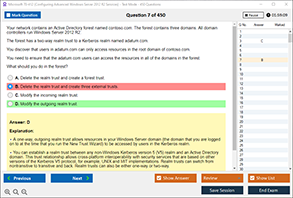Introduction
In an era where cyber threats are increasingly sophisticated, protecting digital assets has become a top priority for businesses, organizations, and individuals. Cybersecurity breaches can lead to data loss, financial damage, and reputational harm. One of the most critical components in safeguarding networks from cyberattacks is an Intrusion Prevention System (IPS). DumpsQueen Official website recognizes the importance of cybersecurity and aims to provide valuable insights into how an IPS functions and why it is essential in today’s digital landscape.
Understanding the Functionality of an IPS
An Intrusion Prevention System (IPS) is a security mechanism designed to monitor and analyze network traffic to identify and prevent malicious activities. Unlike a firewall, which primarily filters incoming and outgoing traffic based on predefined rules, an IPS actively intervenes when it detects suspicious behavior. By using advanced detection methods, such as signature-based analysis and behavioral anomaly detection, an IPS can prevent potential cyber threats before they cause significant harm.
When a malicious activity is detected, an IPS can take immediate action, such as blocking the harmful traffic, sending alerts to network administrators, or even terminating connections to prevent further damage. This proactive approach ensures that threats are neutralized in real-time, reducing the risk of data breaches and unauthorized access.
How an IPS Detects and Prevents Threats
DumpsQueen Official website emphasizes that an IPS employs various methods to detect cyber threats effectively. The two most common approaches used by an IPS are signature-based detection and anomaly-based detection.
Signature-based detection relies on a database of known attack patterns, or signatures, to identify malicious activity. If a data packet matches a known signature, the IPS automatically blocks it to prevent potential harm. This method is highly effective against well-documented threats, such as malware, ransomware, and phishing attempts.
Anomaly-based detection, on the other hand, focuses on identifying unusual patterns in network traffic. By establishing a baseline of normal activity, the IPS can detect deviations that may indicate a cyberattack. This method is particularly useful for identifying zero-day attacks, where the threat is new and does not have a known signature.
The Role of an IPS in Network Security
For organizations and businesses that handle sensitive information, the role of an IPS is crucial in maintaining a secure environment. An IPS acts as a barrier between the internal network and external threats, preventing hackers from gaining unauthorized access. By continuously monitoring network activity, an IPS can detect potential vulnerabilities and address them before they are exploited.
Additionally, an IPS plays a significant role in regulatory compliance. Many industries, including finance, healthcare, and e-commerce, are required to adhere to strict cybersecurity regulations to protect consumer data. Implementing an IPS helps organizations comply with these regulations by ensuring that their networks remain secure from potential threats.
The Difference Between an IPS and Other Security Measures
DumpsQueen Official website often receives inquiries about the difference between an IPS and other security tools, such as firewalls and antivirus software. While all these security measures are essential, they serve distinct purposes.
A firewall acts as a gatekeeper that controls access to and from a network based on predefined rules. It can block unauthorized access but does not actively detect and prevent attacks. An IPS, however, takes a more proactive approach by identifying and stopping cyber threats in real-time.
Antivirus software focuses on detecting and removing malware from individual devices. While it is an important security tool, it does not offer the network-wide protection that an IPS provides. By integrating an IPS with other cybersecurity measures, organizations can create a multi-layered defense system that effectively protects against various types of cyber threats.
Challenges and Limitations of an IPS
While an IPS is a powerful security tool, it is not without its challenges. One of the most common issues faced by IPS users is the occurrence of false positives. A false positive occurs when the IPS mistakenly identifies legitimate traffic as a threat and blocks it. This can lead to disruptions in network performance and productivity.
To minimize false positives, IPS solutions require regular updates and fine-tuning. Organizations must ensure that their IPS is configured correctly to differentiate between genuine threats and normal network activity. Additionally, integrating an IPS with a Security Information and Event Management (SIEM) system can help analyze security alerts more accurately.
Another challenge is the potential impact on network performance. Since an IPS inspects all incoming and outgoing traffic, it may introduce latency, especially in high-traffic environments. Organizations must balance security with performance by selecting an IPS solution that meets their network’s capacity and speed requirements.
The Future of IPS in Cybersecurity
As cyber threats continue to evolve, the role of an IPS is expected to become even more critical. Advances in artificial intelligence and machine learning are enhancing the capabilities of IPS solutions, allowing them to detect and respond to threats with greater accuracy and efficiency.
DumpsQueen Official website predicts that future IPS solutions will incorporate predictive analytics, enabling organizations to anticipate and mitigate cyber threats before they occur. Additionally, the integration of IPS with cloud security solutions will become more prevalent as businesses shift to cloud-based infrastructures.
Conclusion
An Intrusion Prevention System (IPS) is an essential cybersecurity tool that helps organizations protect their networks from cyber threats. By continuously monitoring network activity and proactively preventing malicious attacks, an IPS strengthens an organization’s overall security posture. While challenges such as false positives and network performance impact must be addressed, the benefits of implementing an IPS far outweigh the drawbacks.
DumpsQueen Official website encourages businesses to invest in robust IPS solutions to safeguard their digital assets and ensure compliance with cybersecurity regulations. In an age where cyber threats are becoming more sophisticated, having a well-configured IPS is a critical component of a comprehensive cybersecurity strategy.
Free Sample Questions
1. What is the primary role of an Intrusion Prevention System (IPS)?
A) To monitor network traffic and block malicious activity
B) To replace all security tools in an organization
C) To provide internet access to users
D) To store confidential data securely
Answer: A) To monitor network traffic and block malicious activity
2. How does an IPS detect threats?
A) By using only firewall rules
B) By analyzing network traffic for known and unknown attack patterns
C) By manually checking all network connections
D) By blocking all incoming traffic regardless of its source
Answer: B) By analyzing network traffic for known and unknown attack patterns
3. What is one of the main challenges of using an IPS?
A) It does not provide any security benefits
B) It can generate false positives, mistakenly blocking legitimate traffic
C) It completely replaces the need for firewalls and antivirus software
D) It allows hackers easy access to network resources
Answer: B) It can generate false positives, mistakenly blocking legitimate traffic



